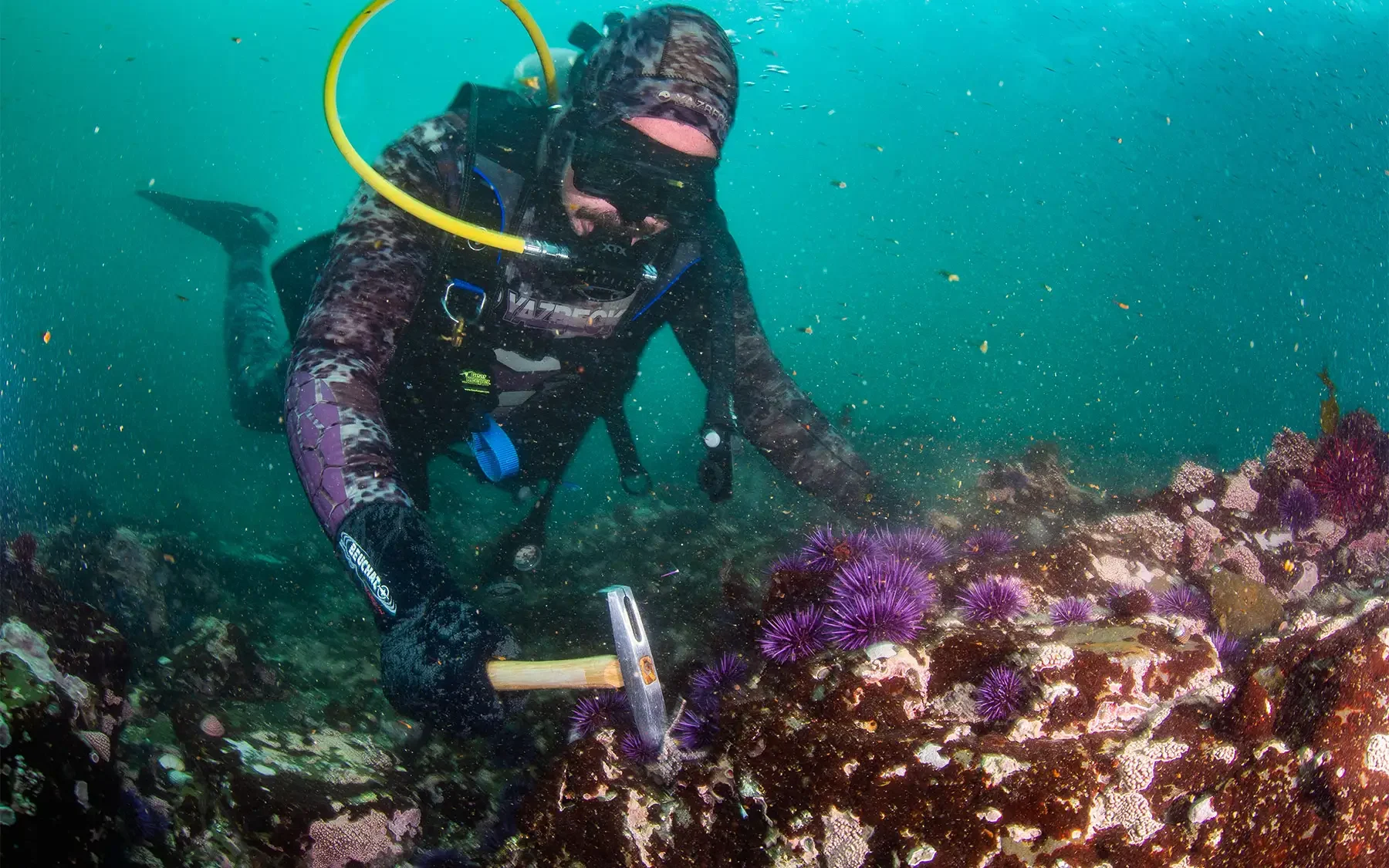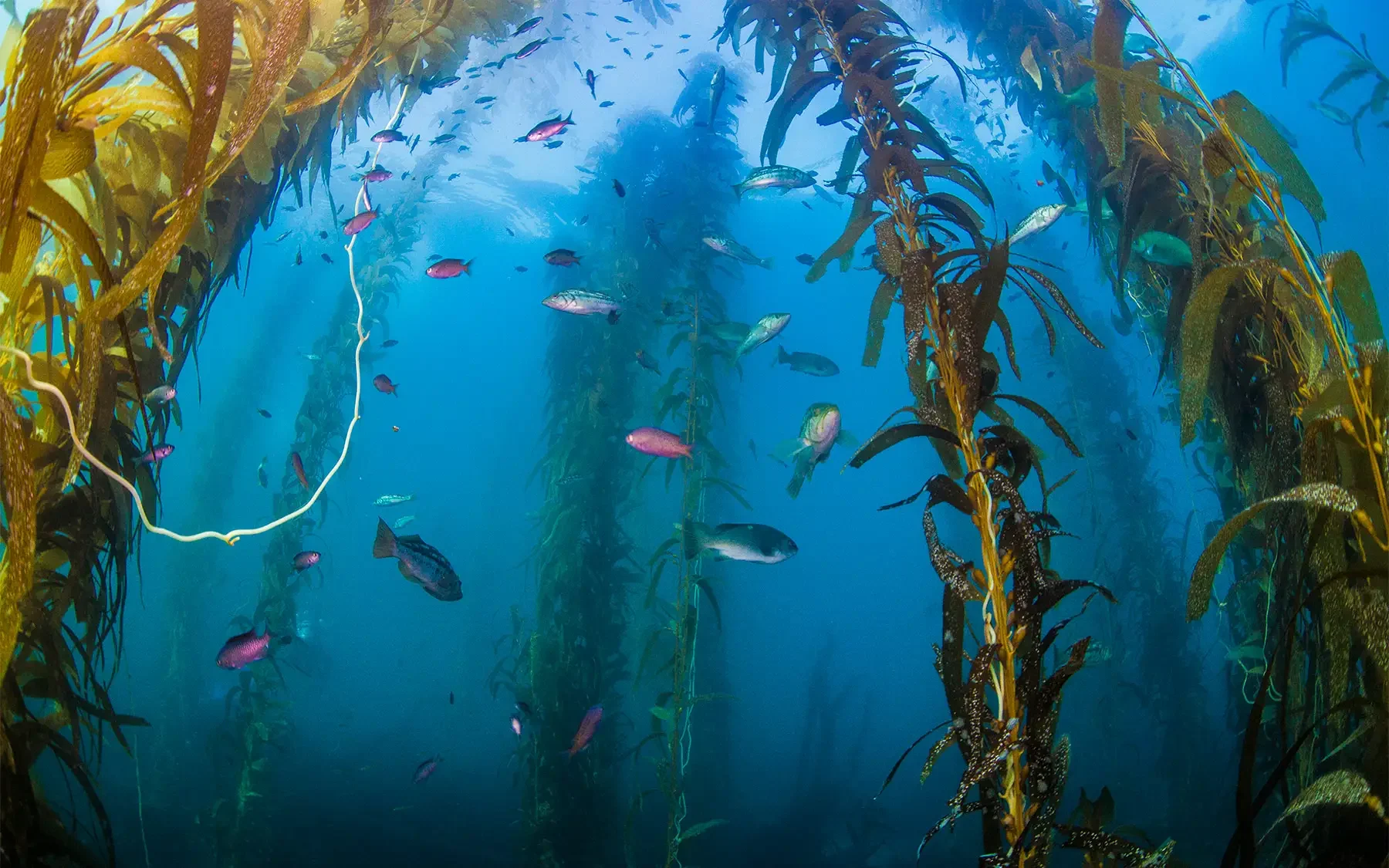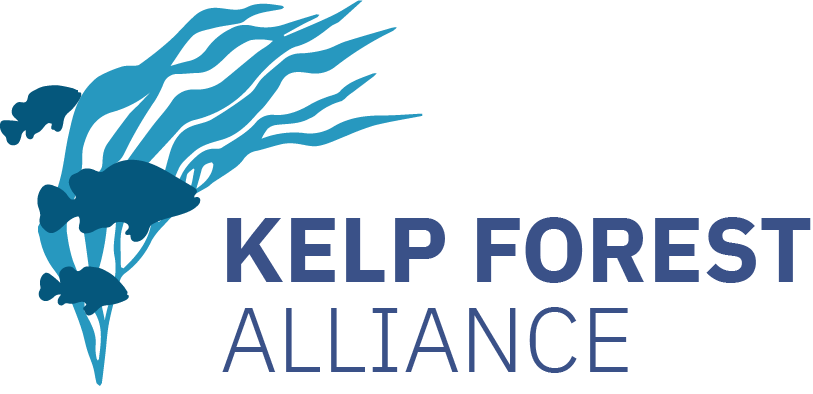There are multiple ways of beginning a kelp forest restoration project. Each project will vary depending on the individuals involved, their values, the resources available, the biological composition of the ecosystem, and the desired project outcomes. However, there is a general theme that previous, successful restoration projects have followed, and we designed this chapter, “Getting Started,” to assist in identifying key considerations in the initial stages of the restoration process.
4.1 Objectives
Setting clear objectives for the restoration intervention is a critical early step in planning and deciding upon restoration (this is also critical for project monitoring and evaluation, chapter 6). Identifying why you desire kelp forest restoration is essential for setting project objectives. As described in chapter 3, “The Human Element,” there can be a diversity of values and rationales for restoration among different members of a community. Fundamentally, you can distil your project objectives down to the questions, “What do all participant groups value about kelp forests, and/or what do they want to protect/restore and why?”
The answers to these questions are, by nature, multi-faceted and may encompass values related to environmental services (e.g., biodiversity, carbon/nutrient cycling), economics (e.g., fisheries and harvesting), social/health (e.g., recreational spaces, or mental and cultural wellbeing), or regulatory obligations (e.g., offsetting).
4.1.1 Fundamental and Means Objectives
Clearly defining the objectives of a restoration project will help determine the methodologies used and the ultimate lifespan of the project. You should ensure that you design the planned interventions to meet the desired objectives before starting a new project. These objectives are distinguished in two forms: fundamental and means 1 2.
Fundamental objectives are the important and crucial reasons that we care about a decision. These are often the desirable outcome (e.g., biodiversity enhancement, socioeconomic revival, area restored, legal framework) of a project and the reason we initially care about restoration. For example, a fundamental objective could be total area of kelp canopy restored. Decisionmakers (I.e., project managers and/or resource managers) typically set fundamental objectives and aim to set realistic parameters and carefully craft achievable outcomes that are manageable.
Means objectives are not necessarily the desired outcome in themselves, but instead, they are the matters and conditions we care about because they help achieve the fundamental objectives. They are the “how” (manner, methods, logistics) for achieving fundamental objectives. For example, if the fundamental objective is to recover 10 hectares of kelp in a location, the means objective might be to reduce grazing pressure of urchins to less than two urchins per square meter. Means objectives help build the hypotheses by addressing the “how,” specifically underpinning and conceptualizing the mechanisms to which a successful restoration project can ensue.
Both the fundamental and means objectives should include a unit of measure (e.g., area of kelp to restore/protected, number of indicator species present and at particular densities, reduction of herbivore pressure to threshold density), direction for units (e.g., increase/decrease minimize/maximize), or a benchmark goal (e.g., hectares of kelp restored, abalone fishery reopened).
Distinctively, fundamental objectives for kelp restoration typically focus on three main facets: 1) maintaining remnant kelp, subsequent associated species, and biological/genetic diversity, 2) restoring kelp and/or species to an established benchmark, 3) rebuilding kelp forest services such as fishery species for harvest, carbon sequestration, or wave attenuation.
Means objectives then prioritize the logistical considerations necessary to reach the fundamental objectives such as identifying appropriate tools to protect and enhance remnant kelp beds via grazer reduction, regulating harvest, mapping, and monitoring and/or adding kelp to the ecosystem (chapter 5).
With a clear definition of the fundamental and means objectives, the next step is to understand the potential interventions available to achieve objectives (chapter 5). Further, developing a conceptual model and a hypothesis that link the problem statement (chapter 2.2) with the objectives is essential and will help identify the alternative interventions necessary to accomplish fundamental and means objectives. While working through this process, there may be objectives of competing interest, or ones that may not be attainable for any number of logistical, ecological, legal, or financial reasons. Charting a course of action with consideration to sensible and appropriate solutions is crucial to ensuring the achievement and ultimately the success of the project. For more on using fundamental and means objectives in kelp restoration planning, “A Structured Approach for Kelp Restoration and Management Decisions in California” 3, is a helpful document.
Defining the problem and restoration objectives is often an iterative process, and as you collect new information, you may refine and evolve the problem statement. The remainder of this chapter highlights several specific topic areas that you should consider during the planning process prior to conducting restoration.
It is increasingly accepted that a reference ecosystem may instead be a ‘composite vision’ synthesised from several locations, values, objectives, and historical and predictive records 4. Regardless of whether you use an existing ecosystem or a ‘composite vision’ as a reference, the goals you set for restoration should reflect the values and objectives established at the outset of the project as well as those of the local community. This composite vision will be linked to the fundamental question of what users want out of a system in the future. Goal setting can be one of the most challenging parts of beginning a restoration process.
| Box 4.1 Reference Ecosystems |
|---|
| Historically, reference ecosystems represent the unperturbed, natural, or historical baseline of the ecosystem. Ecosystem function, and the biomass and biodiversity within these ecosystems, often inform the desired goals for restoration. However, in many instances the human perception of the reference ecosystem may be skewed to a recent point in time, to which the individual has personally interacted with the environment and, therefore, that state is deemed to be the baseline (a concept known as ‘shifting baselines’). In other circumstances, identifying reference ecosystems may no longer be possible, for example, where ecosystem loss has occurred prior to collection of adequate data (e.g., many shellfish reefs) 5. As a result, these historical baselines may no longer be sensible targets for restoration when current or predicted environmental conditions (e.g., water temperature) are incompatible with known historical conditions or kelp forest community 6 7, also see chapter 7. |
4.2 Biosecurity and permitting
To make any modifications to the marine environment, appropriate permits and permissions are required. Permitting is a mechanism for the relevant ocean managers to evaluate the potential impacts of a restoration project on natural, cultural, and economic resources. It also ensures compatibility with other resource use designations and regulations (e.g., marine protected areas, designated commercial fishing zones, culturally significant areas). These approvals can range from government permits to manipulate the environment to community approval to work in a particular area.
In most instances, restoration permitting and approval is a lengthy process ranging from weeks to months to years, and you should start as early as possible prior to project initiation. You can usually find information on necessary approvals by contacting your local environmental management office as well as bodies responsible for governing the marine environment (municipal, traditional landowner, state, federal). In many cases, the groups involved in issuing these permissions will have a vested interested in the project’s success, and you can incorporate their input early with proper consultation. Once you establish a working relationship, additional permissions may be granted at a faster rate.
4.2.1 Starting the permitting process
The permitting process begins by starting a dialogue with the appropriate groups and/or agencies, such as municipal, traditional owners, state, and federal agencies (chapter 3). These jurisdictions are not exclusive, and it is important to consult with all applicable levels of government and obtain the necessary permissions. The previously described project objectives may assist in determining the appropriate regulatory pathway to get the project underway. Because early consultation starts a dialogue between the project manager and the relevant authorities, there may be opportunities to foster new approaches to kelp forest restoration, especially in rapidly changing social and environmental contexts. Further, working directly with agency decision-makers or other relevant permitting authorities will identify likely project bottlenecks and allow you to incorporate them into project timelines. Investing effort into navigating the regulatory landscape is therefore essential to successful restoration and should begin early in the planning process.
Permitting is often a complicated task with multiple considerations. Acquiring permits may require detailed, time-intensive project plans for approval, and they may also have an application fee, both elements that should be taken into consideration in the planning process. In many cases, the loss of kelp in a region is novel and associated with anomalous ecological and oceanographic conditions (e.g., invasive sea urchins, warm water temperatures). Similarly, kelp restoration is a nascent and evolving practice. As such, high degrees of uncertainty around potential risks of interventions can often constrain access to permits. This process can be particularly difficult when you are seeking to apply novel solutions to addressing the complex and dynamic ecological challenges associated with kelp restoration.
This uncertainty emphasizes the importance of building strong working relationships with regulators as early in the process as possible while having a thorough understanding of the project’s purpose and methods. Groups interested in advancing restoration may be able to advance restoration-enabling policy and regulatory changes by working constructively with local managers and communicating the need for new or altered policies related to kelp forest management.
4.2.2 Biosecurity
Kelp restoration projects seeking to introduce biological materials into the environment must address biosecurity concerns related to pathogens and genetic integrity 8 9. We describe some of these concerns here.
4.2.2.1 Pathogens
The accidental introduction of pathogens and parasites has caused significant ecological and economic damage worldwide 10. As such, transplanting organisms or biological material from areas that may have different pathogen assemblages is concerning to regulators. It is important to not only understand the distribution of pathogens specific to the target restoration species but also other pathogens that may be present in the water column or could reasonably adhere to target samples (e.g., shellfish viruses). In general, you can address these concerns by ensuring good hygiene when handling biological material (chapter 5.3 and Appendix 1) and selecting source material from areas close to the intended transplant site(s), as they are likely to have the same pathogen and environmental profiles and may decrease the risk of introducing or enabling a pathogen. In situations where there is no source material close to the restoration area (i.e., there are no local kelp populations), kelp restoration practitioners should work with regulators to identify appropriate source locations and potential mitigation measures to reduce pathogen risk. If applicable, it may be useful to consult with local seaweed aquaculturists for this step.
4.2.2.2 Genetic considerations
Natural resource managers typically seek to maintain or restore the historic properties of populations. This goal includes preserving the underlying genetic diversity and structure, as these characteristics ensure populations are most optimally adapted to current environmental conditions and provide sufficient diversity for future adaptation.
Ensuring that source materials for restoration transplants are locally adapted and unlikely to erode local population genetic composition/structure through the introduction of novel genotypes is an important consideration for permitting. Ideally, kelp restoration practitioners should assess the population genetic structure and diversity in their region to help inform the selection of appropriate source materials. In the absence of this information, selecting source material within close proximity to the restoration site is a best practice. In any instance, restoration practitioners should work with regulators and other experts to identify the most appropriate source material for transplant efforts. In systems with large scale loss, propagules may not be available from a nearby site. This absence does not have to prohibit restoration, but rather may serve as a point for discussion with managers and permitting authorities regarding risk tolerance in achieving restoration objectives. It may be that in cases of catastrophic loss, decision-makers are willing to accept a higher degree of risk related to pathogens and/or genetic diversity and structure in order to restore the ecosystem (chapter 2.1.6).
With rapid climate change and the inability of some species to adapt, there is growing interest in exploring ‘future proofing’ of restoration efforts (See chapter 7). From a permitting and policy perspective, modifying the genetic composition of real-world populations as a marine resource management tool is currently not accepted in most jurisdictions. Practitioners interested in future-proofing kelp restoration projects should discuss with regulators before getting too far into their planning process.
4.3 Evaluation of success and monitoring
Monitoring is necessary to determine if goals and objectives are being met and can facilitate adaptive mid-course modifications to the project. Monitoring can take a few different forms (chapter 6.2.1.) to address a broad suite of objectives and should be incorporated into planning and budgeting accordingly.
Ideally, you should first conduct monitoring to establish a pre-restoration baseline of the area to be restored and reference ecosystems, and then survey repeatedly during and following restoration to understand if you met your fundamental objectives (e.g., X area of kelp biomass present, increase in kelp or fish recruitment, target fishery species restored). Should this be infeasible due to capacity constraints, you can direct limited resources to monitoring the restoration site only. But it may be more difficult to attribute change to your restoration action. It is important to determine the monitoring process and ensure adequate resources are available for this step prior to conducting restoration in order to objectively evaluate these targets and the success of the project. We give further detail on designing monitoring and evaluation programs in chapter 6.
4.4 Site selection
Logistical and environmental factors will influence the likeliness of a successful restoration project and are an important consideration in site selection and determining project objectives11. It is therefore important to monitor and assess potential sites for attributes that will increase the chances of success (Table 4.1). Ultimately, the specific location for a restoration site should be one that has the best possible chance of success while maintaining focus on the objectives set for the project (see Table 4.1: key elements for site selection).
Table 4.1 ey elements for site selection and rationale
| Potential site selection criteria to consider | Rationale | Category |
|---|---|---|
| Distance to existing or remnant kelp forests | Leverage existing beds for genetic resilience and spore distribution | Biotic |
| Heat stress | Heat stress (typically found in the warmest season) can push kelp past physiological limits, reduce their fitness, or cause mortality. Can impact both where and when to restore | Abiotic |
| Sedimentation | Sedimentation can prevent the settlement and development of new kelp | Abiotic |
| Nutrient pollution | High nutrient pollution can cause algae blooms, which limit photosynthesis and create conditions that allow competitors (e.g., turf algae) to out compete kelp | Abiotic |
| Negative anthropogenic activity | Areas with low human use (e.g., harvesting) may have fewer disturbances and thus better chances for success as well as fewer chances of conflict between user groups | Human |
| Stewardship | Areas with high levels of stewardship may benefit from enhanced monitoring of restoration, higher enforcement of protections, and potential volunteers to aid in the restoration process | Human |
| Grazer presence and density | High populations of grazers (e.g., sea urchins) can reduce kelp biomass and prevent new populations from developing | Biotic |
| Reef topography | Topography may determine the feasibility of different restoration techniques (e.g., urchin culling, transplanting) | Abiotic |
| Wave exposure | High wave exposure can inhibit in-water restoration activity, but many kelp favor high wave exposed environments. Some gazers (e.g., urchins) are deterred from similar environments | Abiotic |
| Ease of access for restoration | Ability for practitioners to frequently visit the restoration site while considering site ownership/management, costs, safety, and environmental conditions (this is related to wave exposure, e.g., sheltered cove vs. exposed area) | Human |
| Predator presence or density | Large predator populations can exert pressure on grazers and enable kelp growth | Biotic |
| Historic presence of kelp | Historical presence of beds (as identified through long-term aerial imagery data sets, traditional knowledge, or remotely sensed data if available) may be indicative of resistance or resilience | Biotic |
| Depth and substrate of reef | Maximum suitable habitat for restoration activities within species growing range | Abiotic |
| Freshwater input | Can be detrimental to kelp health, can limit grazer encroachment | Abiotic |
| Shelter from large waves and swell | Sites that offer protection from swell and high wave energy are easier to conduct restoration and monitoring | Abiotic |
Once you select a general area to restore, determining the boundaries and outlining a discreet ‘area of restoration’ is important, as you will use these boundaries to evaluate the outcomes of the process (e.g., X area restored). Explicitly mapping the reef or target area assists with understanding how much restoration may need to happen at a given location. For example, if you select a cove as a restoration site and establish a boundary (i.e., by drawing a polygon) within the cove (X hectares), you can quantify how much area is suitable habitat for restoration (e.g., rocky reef) and how much restoration area is desired (Y hectares). Understanding the size and shape (the ‘polygon’) of the targeted restoration area is a way to estimate costs and logistics as well as set realistic expectations for how much you can restore. In addition, permitting and resource agencies will require you to have a clear understanding of your designated restoration area before permits will be issued.
4.5 Designing restoration project
The first step in a project is to identify the actions that will address the stated problem and objectives as well as fill any knowledge gaps. People around the world have used a variety of methods and approaches for marine restoration to date, and these attempts have yielded valuable and insightful findings. Given the novelty of kelp restoration and the rapidly emerging field, there is still a high level of uncertainty in most aspects of kelp restoration. Therefore pilot projects, with lower financial risk and uncertainty, are an ideal platform to catalyse the transition from idea to action and may facilitate strategic upscaling of the restoration activity.
Whatever the circumstances for a particular place and community, the process of launching a restoration project should begin by setting clear objectives, understanding regulatory pathways (biosecurity and permitting), and developing manageable expectations through conceptual models and pilot projects.
Pilot projects should remain grounded in the established project values, and you can design them to meet any number of learning objectives, from testing assumptions and demonstrating interventions (South California: Palos Verdes & Japan: Hainan transplants) in a local context, to informing and strengthening community involvement (Haida Gwaii: Gwaii Haanas & Sydney: Operation Crayweed), to demonstrating approaches to inform management and/or support proposals for larger financial or institutional investments. As projects progress, what started as several pilot projects may eventually contribute to a larger restoration action or take the form of a single large project.
The idea behind these projects is that they serve as a ‘proof of concept’ and can catalyse future interest, investment, and subsequent action. These smaller-scale, localized projects will help you better approximate the financial and logistical investments associated with a given approach in a specific place. Pilot projects can also be the most challenging aspect of the restoration process, because they are the moment when an idea or desire to conduct restoration becomes a reality and are often the first step to remedying the habitat loss. While it may be enticing to immediately get started with a pilot project, it is still important to run through logistics and formulate the idea into a conceptual model and hypothesis.
4.6 Pilot projects to scale
After a successful pilot project, you will need to consider how to scale up the size of the restored area from the pilot project scale (often 10s to 100s of m2) to the scale of kelp loss (often km2). All the principles outlined above and below are still relevant to large-scale projects while the main constraint will typically become project resourcing and funding (chapter 2.1.5). As you have demonstrated your proof of concept, you will need to focus on replicating that success over a much larger area. Typically, this transition utilizes the same methods but with more materials (e.g., transplants, seed vectors, reefs) and person hours (e.g., installation, urchin management, monitoring) and these costs may not scale in a linear way. Large-scale projects from Japan and Korea 12 demonstrate that large- scale projects can restore areas at marginally lower costs than small-scale projects (low 10s of thousands vs. hundreds of thousands of dollars). Nevertheless, these costs are still significant, and an adequate resourcing and project management plan is needed to go from small-scale to large-scale restoration.






